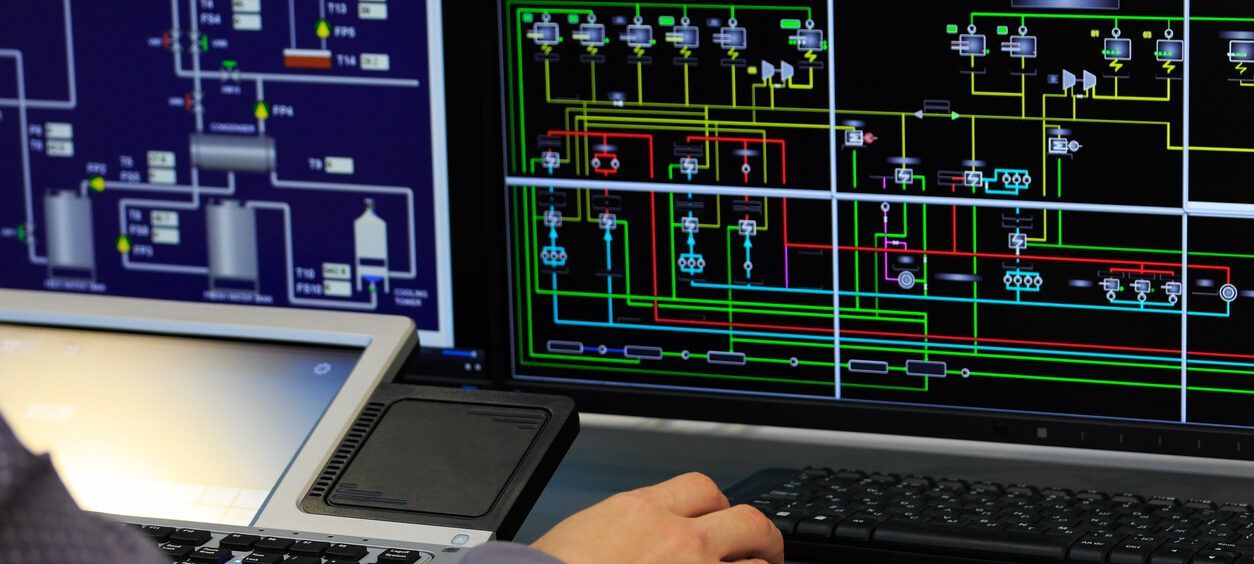Alarm in SCADA
In any automated industrial system,
Types of alarms in SCADA
plays a crucial role in ensuring smooth operations. A SCADA (Supervisory Control and Data Acquisition) system is designed to monitor and control industrial processes across various industries. Alarms are an essential part of this system, notifying operators when a situation deviates from expected values. Alarm management in SCADA helps to maintain process safety, optimize performance, and reduce downtime. This article will provide an overview of the various aspects of alarms in SCADA, including their levels, states, and the difference between alarms and events.

Alarm in SCADA
An alarm in SCADA is a trigger that indicates a deviation in the system’s operation, signaling an operator to take corrective action. Alarms play a crucial role in real-time monitoring, providing an immediate alert when something goes wrong. These alarms are often classified based on their severity and urgency, helping operators prioritize responses accordingly. Alarm management systems and standards like IEC 62682 are designed to streamline alarm handling, ensuring operators receive actionable notifications that help maintain operational integrity.
What is an alarm in SCADA?
An alarm in SCADA is an automated notification that a predefined threshold or parameter has been exceeded. Alarms can be caused by physical events, such as temperature fluctuations, or from system faults, like communication failures. Alarm management is essential to manage the volume of alarms efficiently. Alarm management systems like ISA Alarm Management provide guidelines for handling alarms and minimizing their impact on operations. By integrating tools for alarm logging and notification, these systems help ensure a structured response to alerts.
What are the levels of SCADA alarm?
SCADA alarms can be classified into different levels based on their urgency and potential impact on the system. These levels are typically defined by the alarm management system to help operators prioritize their actions effectively. Common levels include critical, major, and minor, with each requiring varying degrees of attention. For example, ISA Alarm Management systems typically categorize alarms as either high priority or low priority, helping operators focus on what matters most to prevent significant downtime or hazards.

What is the difference between alarm and event in SCADA?
A SCADA alarm is a real-time notification of an abnormal condition, whereas an event in SCADA is a recorded occurrence that doesn't necessarily require immediate attention but may still affect system performance. The key difference lies in the urgency: alarms demand immediate action, while events are more informative and may not always require direct intervention. The use of alarm management software helps distinguish between alarms and events, ensuring that operators are aware of critical issues through SCADA alarm notification software.
What is an alarm used for?
An alarm in SCADA is used to notify operators of abnormalities in the system, such as equipment malfunctions, safety breaches, or performance degradation. It is an essential tool for proactive process control, enabling quick decision-making to prevent system failures. Alarms help in monitoring real-time conditions and are vital in maintaining alarm management systems that optimize the response to industrial issues. These alarms help reduce risk, improve efficiency, and ensure that the system operates safely.
What are the SCADA alarm states?
In SCADA systems, alarms have different states, which are used to represent the condition of an alarm at any given time. Common states include Active, Acknowledged, Cleared, and Not Active. Understanding these states is crucial for operators to manage alarms effectively. Automation of the process control alarm response can help streamline the monitoring of these states, allowing for quicker and more efficient reactions to any issues that arise.

What are the three types of alert alarms?
There are three primary types of alert alarms in SCADA: High, Low, and Non-Critical. High alarms indicate a condition that requires immediate attention and corrective action. Low alarms are generally less urgent but still need to be addressed. Non-critical alarms typically indicate minor issues that do not require immediate action but may need monitoring. These classifications are part of the seven types of alarm systems designed to ensure efficient and safe operations in industrial environments.
What is alarm in DCS?
A Distributed Control System (DCS) alarm is similar to SCADA alarms but is used in localized systems to monitor and control processes. Alarm management for process control in DCS systems involves configuring alarms based on specific system requirements. Alarm logging and notification systems are crucial to track and respond to any deviations, ensuring smooth operations in complex industrial processes. The integration of SCADA alarm management software in DCS systems helps unify the alarm management approach across various control systems, enhancing system reliability.
Conclusion
Alarms in SCADA systems are essential to maintaining operational safety and efficiency. From real-time notifications to complex alarm management systems, these tools play a significant role in ensuring smooth operations across industries. As automation continues to evolve, managing these alarms becomes even more crucial.
For more insights into optimizing your alarm management system and enhancing operational efficiency, explore our comprehensive guide on
Alarm Management in SCADA,
contact us today!



